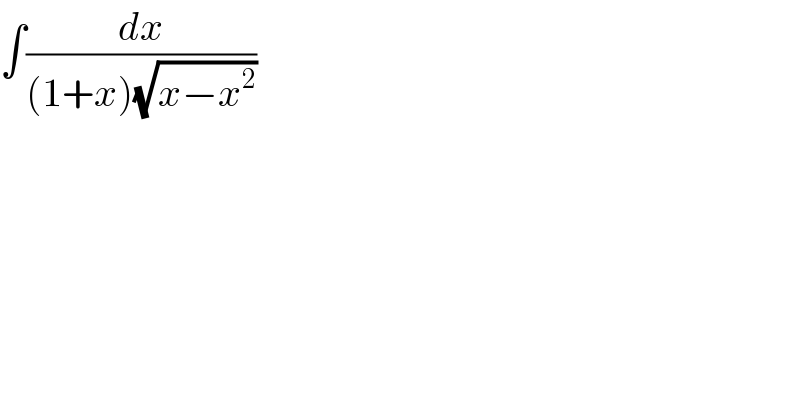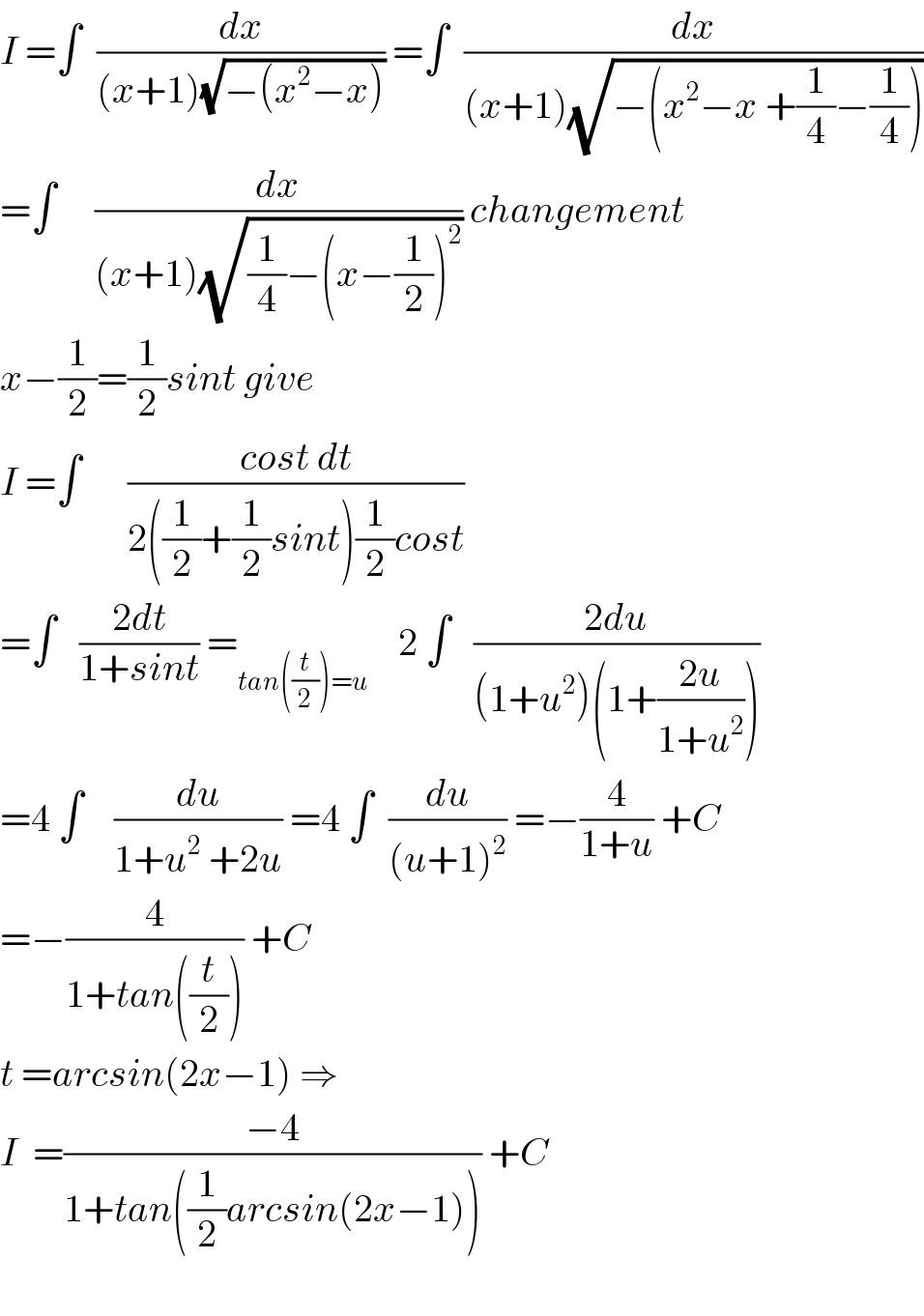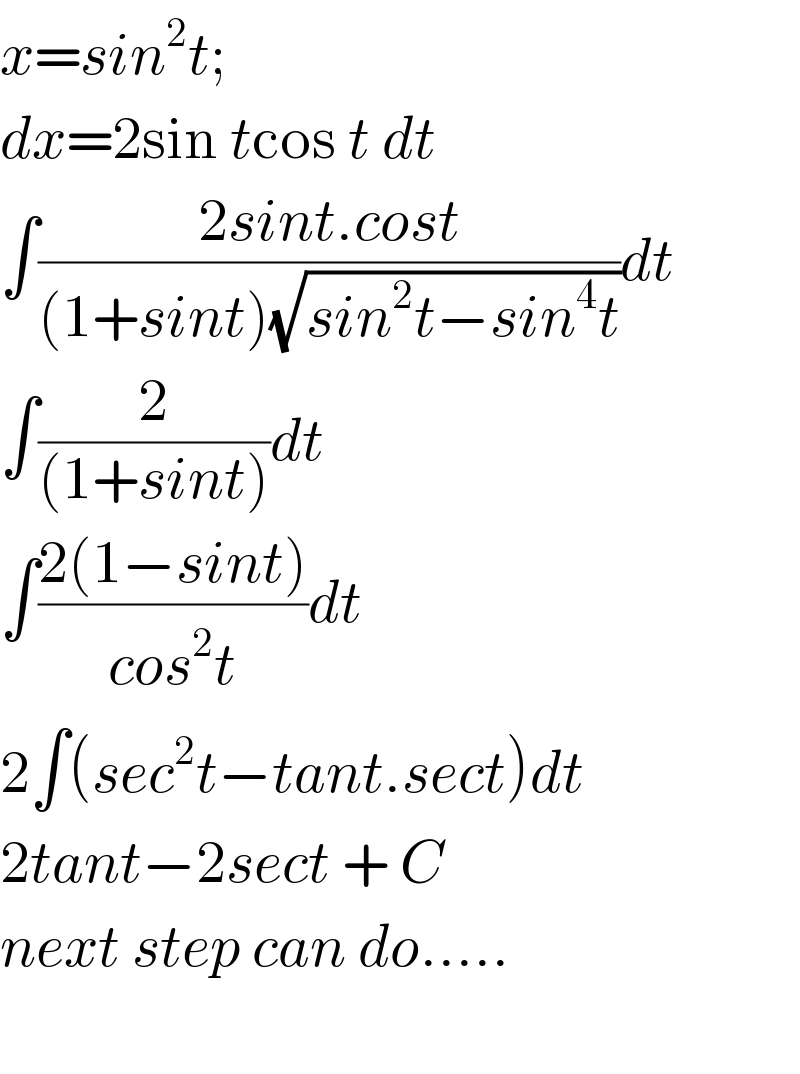
Question and Answers Forum
Question Number 87103 by hamdhan last updated on 02/Apr/20

Commented by abdomathmax last updated on 02/Apr/20

Commented by Ar Brandon last updated on 02/Apr/20

Answered by hamdhan last updated on 02/Apr/20

Commented by Ar Brandon last updated on 04/Apr/20

Answered by MJS last updated on 02/Apr/20
![without trigonometric substitution: ∫(dx/((1+x)(√(x−x^2 ))))=∫(dx/((1+x)(√(x(1−x))))) [t=(√((1−x)/x)) → dx=−2(√(x^3 (1−x)))dt] =−2∫(dt/(t^2 +2))=−(√2)arctan (t/(√3)) = =−(√2)arctan (√((1−x)/(2x))) +C](Q87112.png)
Commented by john santu last updated on 03/Apr/20

